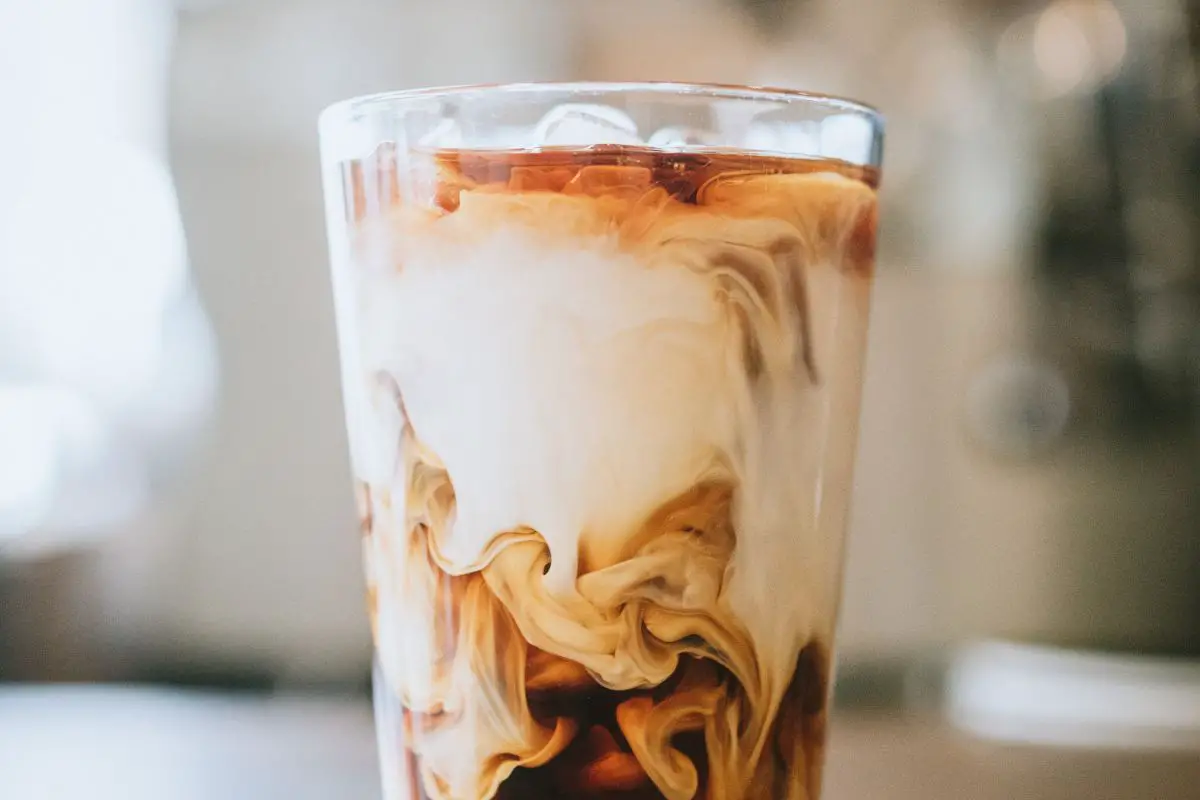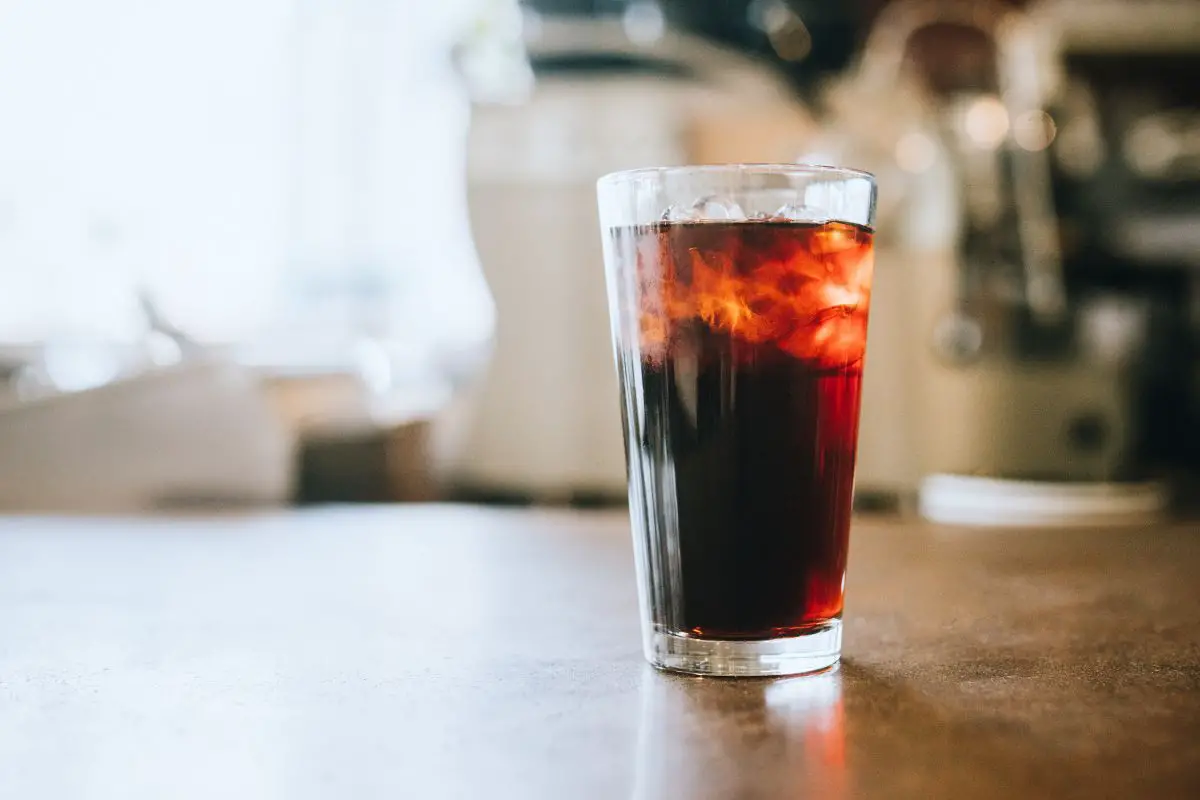Cold brew coffee has gained popularity in recent years due to its smooth and less acidic flavor profile. Many coffee enthusiasts appreciate its mellow taste and claim that it is easier on the stomach compared to traditional hot brewed coffee. But is cold brew truly less acidic?

This article aims to explore the scientific aspects of cold brew coffee and compare its acidity levels to hot brewed coffee. By examining the chemical processes involved in brewing coffee, we can analyze the differences in acidity between the two methods.
To add depth and complexity to our analysis, let’s consider a hypothetical case study. Imagine two individuals with sensitive stomachs who experience discomfort after consuming hot brewed coffee. They switch to cold brew coffee and find that their symptoms alleviate significantly. This case study highlights the potential benefits of low acidity in cold brew coffee for individuals with sensitive stomachs.
In this article, we will delve into the scientific research behind cold brew coffee, compare its acidity levels to hot brewed coffee, explore the benefits of low acidity in cold brew, provide a guide on making cold brew at home, share variations and recipes, and offer tips for enjoying this refreshing beverage. Stay tuned to discover the truth about the acidity levels of cold brew coffee.
Key Takeaways
- Cold brew coffee has a smoother and less acidic flavor profile compared to hot brewed coffee.
- The lower temperature and prolonged steeping time of cold brewing contribute to reduced acidity.
- Cold brew coffee is suitable for individuals with sensitive digestive systems, acid reflux, or other digestive issues.
- Cold brew coffee has a naturally sweet taste due to its reduced acidity.
The Science behind Cold Brew Coffee
The process of cold brewing coffee involves steeping coarsely ground coffee beans in cold water for an extended period of time, resulting in a coffee concentrate that is less acidic compared to traditional hot brewed coffee.
This method of brewing coffee is known to produce a smoother and less bitter taste, making it popular among coffee enthusiasts. The lower acidity in cold brew coffee is due to the fact that the cold water extraction process extracts fewer acidic compounds from the coffee grounds compared to hot water brewing. The lower temperature of the water used in cold brewing also contributes to the reduced acidity, as heat is known to enhance the extraction of acids from coffee beans.
Furthermore, the prolonged steeping time in cold brew coffee allows for a slower extraction of flavors, resulting in a more balanced and mellow taste profile. This extended extraction period helps to extract the desirable compounds from the coffee beans while minimizing the extraction of bitter and acidic compounds. As a result, cold brew coffee is often described as having a smoother and less acidic taste compared to hot brewed coffee.
In the subsequent section, we will compare the acidity levels of cold brew and hot brew coffee to further understand the differences in their flavor profiles.
Comparing Acidity Levels: Cold Brew vs. Hot Brew
Comparing the acidity levels between cold brew and hot brew reveals a stark contrast, akin to the difference between a gentle breeze and a blazing inferno.
Cold brew coffee, known for its smooth and mellow flavor, has significantly lower acidity compared to hot brew coffee. The traditional hot brewing method involves exposing coffee grounds to hot water, which extracts the flavors and compounds quickly, including the acidic ones. In contrast, cold brew is made by steeping coffee grounds in cold water for an extended period, usually overnight. This slow extraction process results in a beverage with reduced acidity.
The lower acidity of cold brew coffee offers several benefits. Firstly, it is gentler on the stomach, making it a suitable option for individuals with sensitive digestive systems or acid reflux. Additionally, the lower acidity contributes to a smoother taste profile, allowing the natural flavors of the coffee to shine through without the bitterness often associated with hot brew coffee. Furthermore, the reduced acidity in cold brew coffee makes it less likely to cause tooth enamel erosion, which is a concern for those who consume coffee regularly.
Transitioning into the subsequent section about the benefits of low acidity in cold brew coffee, it is important to note that its milder nature not only enhances the overall taste but also offers potential health advantages.
Benefits of Low Acidity in Cold Brew Coffee
One advantage of the decreased acidity in cold brew coffee is its potential to provide a more enjoyable and flavorful taste experience. The lower acidity levels in cold brew result in a smoother and less bitter flavor profile compared to hot brewed coffee. This can be beneficial for individuals who find high levels of acidity in coffee to be unpleasant or who have sensitive stomachs.
Cold brew coffee is known for having a naturally sweet taste, which can be attributed to the reduced acidity. This sweetness allows for a more balanced and pleasant flavor that is less likely to overwhelm the taste buds.
The decreased acidity in cold brew coffee also makes it a great option for individuals with acid reflux or other digestive issues. The lower acidity levels are less likely to trigger discomfort or irritation in the digestive system, providing a safer choice for those who need to be mindful of their stomach health.
Additionally, the lower acidity in cold brew coffee allows for the subtle flavors and nuances of the beans to shine through. Without the overpowering acidity, the natural flavors of the coffee can be more pronounced, resulting in a more complex and enjoyable drinking experience.
Finally, the decreased acidity in cold brew coffee also makes it a viable option for individuals with sensitive teeth. The lower acidity levels reduce the risk of enamel erosion and tooth sensitivity that can be caused by highly acidic beverages.
Transitioning to the next section, understanding the benefits of low acidity in cold brew coffee leads to the question of how to make this delightful beverage at home.
How to Make Cold Brew Coffee at Home

To create your own delicious cold brew coffee at home, follow these simple steps.
First, you will need coarsely ground coffee beans. The ratio of coffee to water is typically 1:4, but you can adjust it based on your preference.
Place the coffee grounds in a container, such as a mason jar, and add cold water. Stir the mixture gently to ensure that all the coffee grounds are saturated.
Next, cover the container and let it steep in the refrigerator for at least 12 hours, or up to 24 hours for a stronger flavor.
Once the steeping time is complete, strain the mixture using a fine-mesh sieve or a coffee filter to remove the coffee grounds.
The resulting liquid is your cold brew coffee concentrate, which can be diluted with water or milk according to your taste.
Now that you know how to make cold brew coffee at home, you can explore various cold brew variations and recipes.
These variations include adding spices like cinnamon or vanilla, experimenting with different types of coffee beans, or even incorporating flavors like chocolate or caramel.
By understanding the basic process of making cold brew coffee, you can unleash your creativity and enjoy a wide range of flavorful and refreshing cold brew concoctions.
Cold Brew Variations and Recipes
Exploring a range of flavors and ingredients can elevate the taste profile of your homemade cold brew coffee. While the classic cold brew recipe consists of coffee grounds and water, there are various cold brew variations and recipes that can add depth and complexity to your beverage.
One popular variation is adding spices such as cinnamon or cardamom to the coffee grounds before steeping. This imparts a warm and aromatic flavor to the cold brew.
Another variation involves using different types of coffee beans, such as Ethiopian or Colombian, which can result in unique flavor profiles.
Additionally, some recipes suggest adding a dash of vanilla extract or a drizzle of caramel syrup to enhance the sweetness of the cold brew. These variations allow coffee enthusiasts to customize their cold brew according to their preferences.
Transitioning into the subsequent section about ‘tips for enjoying cold brew coffee,’ it is important to note that while experimenting with flavors and ingredients can be exciting, it is imperative to prioritize safety.
Tips for Enjoying Cold Brew Coffee

When it comes to savoring the rich flavors of cold brew coffee, it is worth considering a few tips that can enhance your overall enjoyment of this refreshing beverage. Firstly, it is important to note that cold brew coffee is typically less acidic than hot brewed coffee. This can be attributed to the fact that the cold brewing process extracts fewer acids from the coffee beans, resulting in a smoother and less bitter taste. However, it is still advisable to consume cold brew coffee in moderation, as excessive consumption of any acidic beverage can potentially lead to dental erosion and other health issues.
To fully enjoy your cold brew coffee, it is recommended to serve it over ice to maintain its refreshing temperature. Additionally, adding a splash of milk or cream can help balance the flavors and provide a creamier texture. For those who prefer a sweeter taste, a drizzle of honey or a sprinkle of cinnamon can be added. It is also important to store cold brew coffee properly to maintain its freshness. Keeping it refrigerated in an airtight container will help preserve its flavors and prevent any bacterial growth.
By following these tips, you can enhance your enjoyment of cold brew coffee while ensuring safety. Remember to consume it in moderation and store it properly to maintain its quality.
Frequently Asked Questions
How long does it take to make cold brew coffee?
Cold brew coffee typically takes 12-24 hours to make, as it requires a slow steeping process. This method extracts flavors and reduces the acidity, resulting in a smoother and less bitter taste compared to traditional hot brewed coffee.
Can I use regular coffee beans for cold brew?
Yes, regular coffee beans can be used for cold brew. Cold brewing extracts fewer acidic compounds, resulting in a smoother and less bitter taste compared to traditional brewing methods.
Does cold brew coffee have more caffeine than hot brewed coffee?
Cold brew coffee typically has more caffeine than hot brewed coffee due to the longer steeping process. However, the exact caffeine content can vary depending on the coffee beans used and the brewing method employed.
Is cold brew healthier than regular coffee?
Cold brew coffee may be considered healthier than regular coffee due to its lower acidity and potential to reduce the risk of digestive issues. However, further research is needed to fully understand the health benefits and potential risks of cold brew consumption.
Can I drink cold brew coffee if I have acid reflux?
Cold brew coffee may be a better option for individuals with acid reflux compared to regular coffee due to its lower acidity. However, it is recommended to consult with a healthcare professional for personalized advice.
Conclusion
In conclusion, cold brew coffee offers a less acidic alternative to hot brew coffee due to its unique brewing process. Through steeping coarse coffee grounds in cold water for an extended period of time, cold brew extracts fewer acidic compounds, resulting in a smoother and less bitter taste. This is particularly beneficial for individuals with sensitive stomachs or acid reflux issues.
Additionally, cold brew coffee can be easily made at home using simple equipment and is highly customizable with various flavor additions. An interesting statistic to note is that cold brew coffee typically contains 67% less acidity than hot brewed coffee, making it a popular choice among coffee enthusiasts seeking a milder flavor profile.
Related articles:
How To Make Cold Brew Less Acidic
